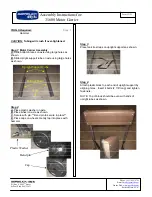
Serial Port
- a low speed interface typically used for mouse and external modems.
Parallel
Port
- a low speed interface typically used for printers.
PS/2
- a low speed interface used for mouse and keyboards.
USB
-
U
niversal
S
erial
B
us - a medium speed interface typically used for mouse, keyboards,
scanners, scanners, and some digital cameras.
Sound
(interface) - the interface between the sound card or integrated sound connectors and
speakers, mic, game controllers, and MIDI sound devices.
LAN
(interface) -
L
ocal
A
rea
N
etwork - the interface to your local area network.
BIOS
(
B
asic
I
nput/
O
utput
S
ystem) - the program logic used to boot up a computer and
establish the relationship between the various components.
Driver
- software, which defines the characteristics of a device for use by another device or
other software.
Processor
- the "central processing unit" (CPU); the principal integrated circuit used for doing
the "computing" in "personal computer"
Front Side Bus Frequency
The working frequency of the motherboard, which is generated by the clock generator for
CPU, DRAM and PCI BUS.
CPU Internal Frequency
The frequency of CPU, which is also the actual working frequency of CPU.
Bus Frequency Ratio
The ratio of the working frequency, multiply Front Side Bus Frequency with Bus
Frequency Ratio will form the CPU Internal Frequency.
CPU L2 Cache
The flash memory inside the CPU, normally Pentium III CPU has 256K or above,
while Celeron CPU will have 128K.
Recognize of CPU
The way to recognize the specification of CPU from the packing Pentium III 370
pins FC-PGA
On the surface of the CPU as shown on the right picture, under the word of
“PENTIUM III” the code is:
RB 80526 P2 866 256
RB :
FC–PGA packing
P2
:
P2–133MHz front side bus frequency
PY–100MHz front side bus frequency
866 :
CPU internal frequency, where here is
866MHz
256 :
the size of L2 cache, where here is 256K
10














































